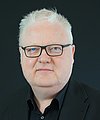WSL is adapting its organisational chart and reducing the number of research units from twelve to nine.
Following discussions with the heads of research units (RUs) and a WSL-wide internal hearing, the WSL Directorate has decided on a new target organisational structure for the WSL. While retaining the basic structure of research units and research groups, it is reducing the number of research units from twelve to nine:
- Forest Resources and Management
Groups: Stand Dynamics and Silviculture; GIS; Sustainable Forestry; Resource Analysis; Plant Regeneration Ecology; Scientific Service NFI - Forest and Soil Ecology
Groups: Dendrosciences; Ecophysiology; Ecosystem Ecology; Soil Functions and Soil Protection; Biogeochemistry; Functional Plant Ecology - Forest Health and Biotic Interactions
Groups: Swiss Forest Protection; Forest Entomology; Phytopathology; Insubric Ecosystems - Biodiversity and Conservation Biology
Groups: Ecological Genetics; Conservation Biology; Ecosystem Dynamics; Spatial Evolutionary Ecology; Evolutionary Genetics; Dynamic Macroecology; Ecosystems and Landscape Evolution; Rhizosphere Processes; Plant-Animal Interactions - Landscape Dynamics and Social Sciences
Groups: Remote Sensing; Land-use Systems; Regional Economics and Development; Social Sciences and Landscape Research; Environmental and Resource Economics - Mountain Hydrology and Mass Movements
Groups: Hydrological Forecasts; Torrents and Mass Movements; Glaciology - Alpine Environment and Natural Hazards
Groups: Alpine Remote Sensing; Alpine Mass Movements; Mountain Ecosystems; Permafrost - Snow Avalanches and Prevention
Groups: Avalanche Formation and Dynamics; Avalanche Warning; Risk and Resilience; Avalanche Protection Measures; Warning and Information Systems - Snow and Atmosphere
Groups: Hydrology and Climate Impacts in Mountain Regions; Snow Hydrology; Snow Physics; Snow Processes
All RU names listed above are working titles and may change in the further development process.
The implementation of the target vision will be further discussed and clarified in the coming months with those directly affected. This will include the final names of the new research units, as well as the exact implementation timeline. The structural changes should be implemented by 2027 at the latest, while the first changes will already be taking place by mid-2025.
The process was directly triggered by the numerous upcoming retirements of heads of RU. In addition, the current structure has grown over the years and has reached a very large management span for the Director with twelve research units. Ultimately, the structural reorganisation also provided the opportunity to review the staff reductions necessary in light of the financial situation, including at the head of RU level. On the other hand, the aim was not to reduce the number of fields of work or topics at WSL. Accordingly, all currently existing research groups will be assigned to one of the nine research units.
Rolf Holderegger, Director of WSL, says: ‘With the new organisation according to the new target image, we will be ready to take on future challenges and implement WSL's new strategy’. It is true that change always brings unrest and dissatisfaction. But Holderegger is convinced: ‘Thanks to the critical but constructive involvement of everyone in the process - especially the many responses to the internal consultation process - we have been able to evaluate the advantages and disadvantages of the various options in detail. The target vision that has now been defined combines the greatest opportunities for the future.’
Contact ¶
Copyright ¶
WSL and SLF provide image and sound material free of charge for use in the context of press contributions in connection with this media release. The transfer of this material to image, sound and/or video databases and the sale of the material by third parties are not permitted.

